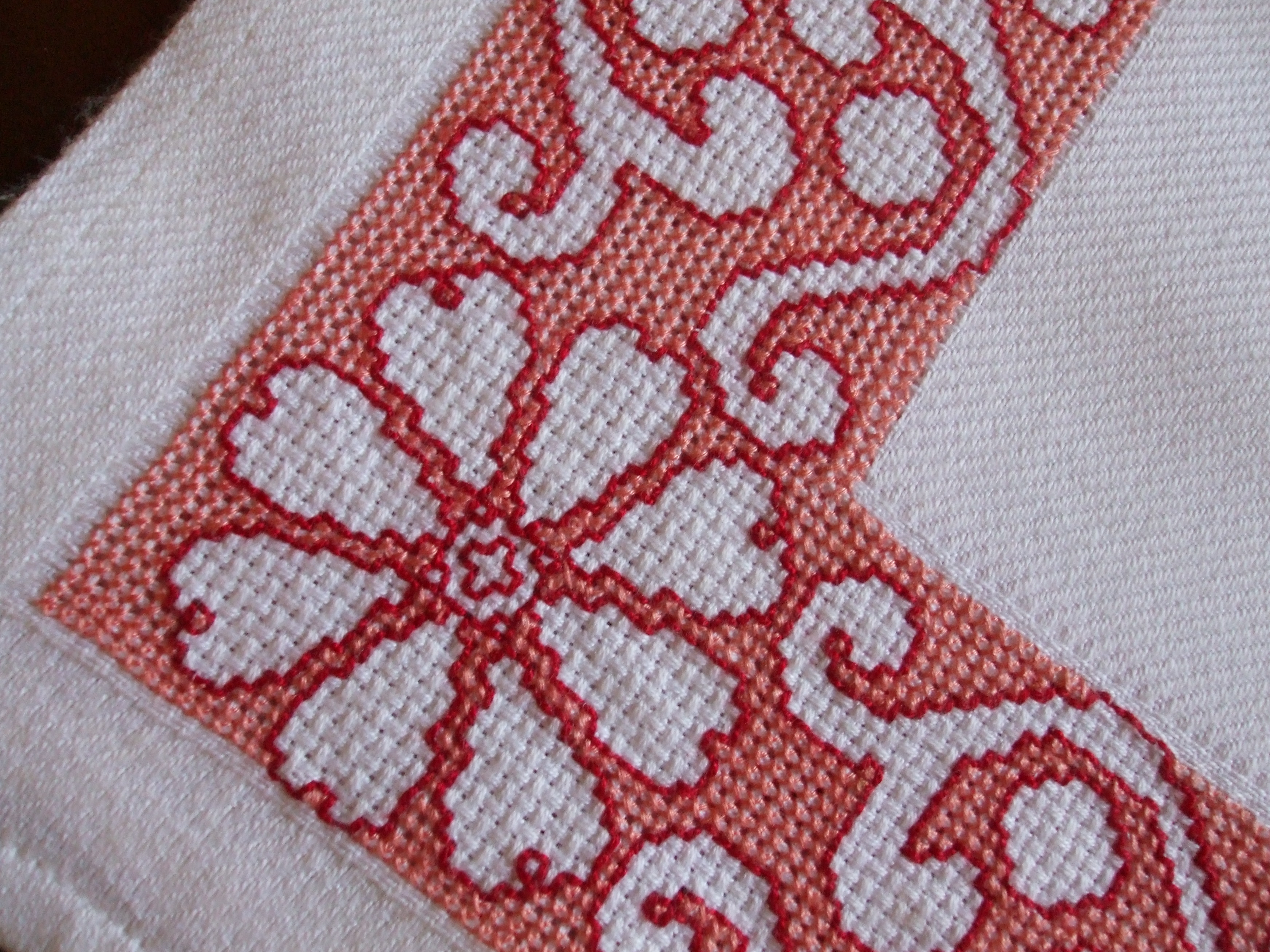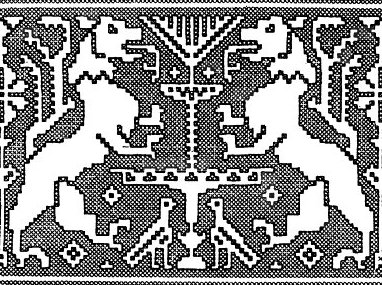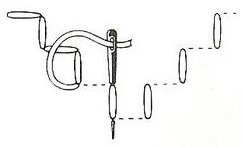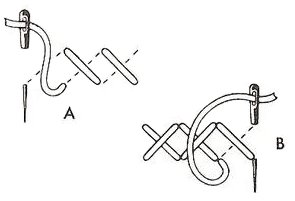Assisi Embroidery is a variation of cross stitch embroidery. It is a very charming italian embroidery and simple to do, with this kind of embroidery you can create decorative works.
Assisi stitching was named after St. Clare of Assisi, “sister” of St. Francis, patron saint of needleworkers. It is worked mainly in cross-stitch and it reprenset a form of counted-thread embroidery based on an ancient Italian tradition where the background is filled with embroidery stitches and the main motifs are left void i.e unstitched.
The name is derived from the Italian town of Assisi where the modern form of the craft originated. The old Assisi Embroideries of the thirteenth and fourteenth centuries are worked on white or slightly cream-tinted linen. A faded blue linen thread is used for the cross stitch background and the outline is in a rust-brown thread.
Stitches are the same but the principle of design is reversed, as it is the background which is embroidered with crosses and the pattern left plain and in outline, like an intaglio.
This tretment imparts great dignity to the work, and the designs, which are usually heraldic in character, look effective on banners, ecclesiastical or secular, besides forming handsome borders for tea-cloths, bags, etc.
Designs and Materials
The designs are planned out on graph paper, drawing the birds and beasts in straight lines after the kindergarten principle. Books on heraldry and wood carving will provide many inspirations for this purpose.The designs consist of conventional birds and beasts, very often grotesque and roughly drawn, and interwoven with conventional leaves and flowers and irregular shapes.
Other colours and threads can be effectively used and the designs carried out onn coarser material to suit modern ideas.
Formal designs suit this embroidery best: strange heraldic birds and beats are appropriate, but our English “bunny”, sitting up with ears erect, or a spirited terrier puppy, are exellent substitutes, and will probably appear more to the children wen worked on their frocks. Assisi embroidery is used a great deal for household pieces: mats, cloths and runners, cushion-covers, pyjama-cases, and so on.
The design is outlines first in double running-stitch or in basket-stitch. The former is worked by taking line of running-stitch round the outline, each stitch the lenght of a cross-stitch square, and then coming back, putting a stitch were you left a space the time before, and the other way abput. Frequently the outining is done in black.
A loosely woven linen of even warp and weft should be used, as the work is done on counted threads, making the unit three or four material threads as in Cross Stitch Embroidery. (Finer materials should be chisen when a transfer is being used).
The ground material is usually white or natural and the embroidery worked in two different colours only a black, brown, blue, green or red being chosen for the outline, and a lighrer contrasting shade for the cross stitch background.
The antique effect of the old Assisi embroideries can be obtained by using a rather faded china blue or soft brown for the background with dark blue or black for the outlines. But any two colours are suitable providing a contrast and balance in colour is maintained.
The cross-stich is worked in rows, in which you make the half-stitches slanting them. Remember that the first stitches in each cross, ober the whole background, must slant the same way.
Working Methods
Two different stitches are used; Holbein Stitch for outliniing the design and Cross Stitch for the background, and a mixture of both for the little borders.
Holbein Stitch or Double Running Stitch
This outline stitch is worked in two journeys of even running stitches, the 2nd and follow round the contour to the point of departure, in retourning, the stitches fill up the spaces left, so making a complete outline.
Cross Stitch Embroidery on Canvas
Beautiful designs, partly worked, or with the designs painted on the canvas, can be bought. The entire surface of the canvas is filled in cross-stitch, giving an effect of tapestry work. This type of embroidery is used for covering chair seats and backs, stool tops, pochettes, etc, and is very hard-wearing. Naturalistic effects of the flowers are reproduced as well as conventional designs and copies of various types of period designs.
How to Work Assisi Embroidery
It is possible to mount the canvas in a frame, otherwise it is apt to be pulled out of shape by the embroidery. Start working in the centre, complete the design and then fill in the background. Three-ply wool or soft embroidery is the most suitable thread to be used for a canvas which holds 8 to 10 crosses to 1 inch.
The back of the work should be alike in stitch all over, for the direction the stitch takes at the back effects the appearance of the front. Avoid starting at the same palce in each row as this tends to make a ridge.






2 thoughts on “How to do Assisi Embroidery”